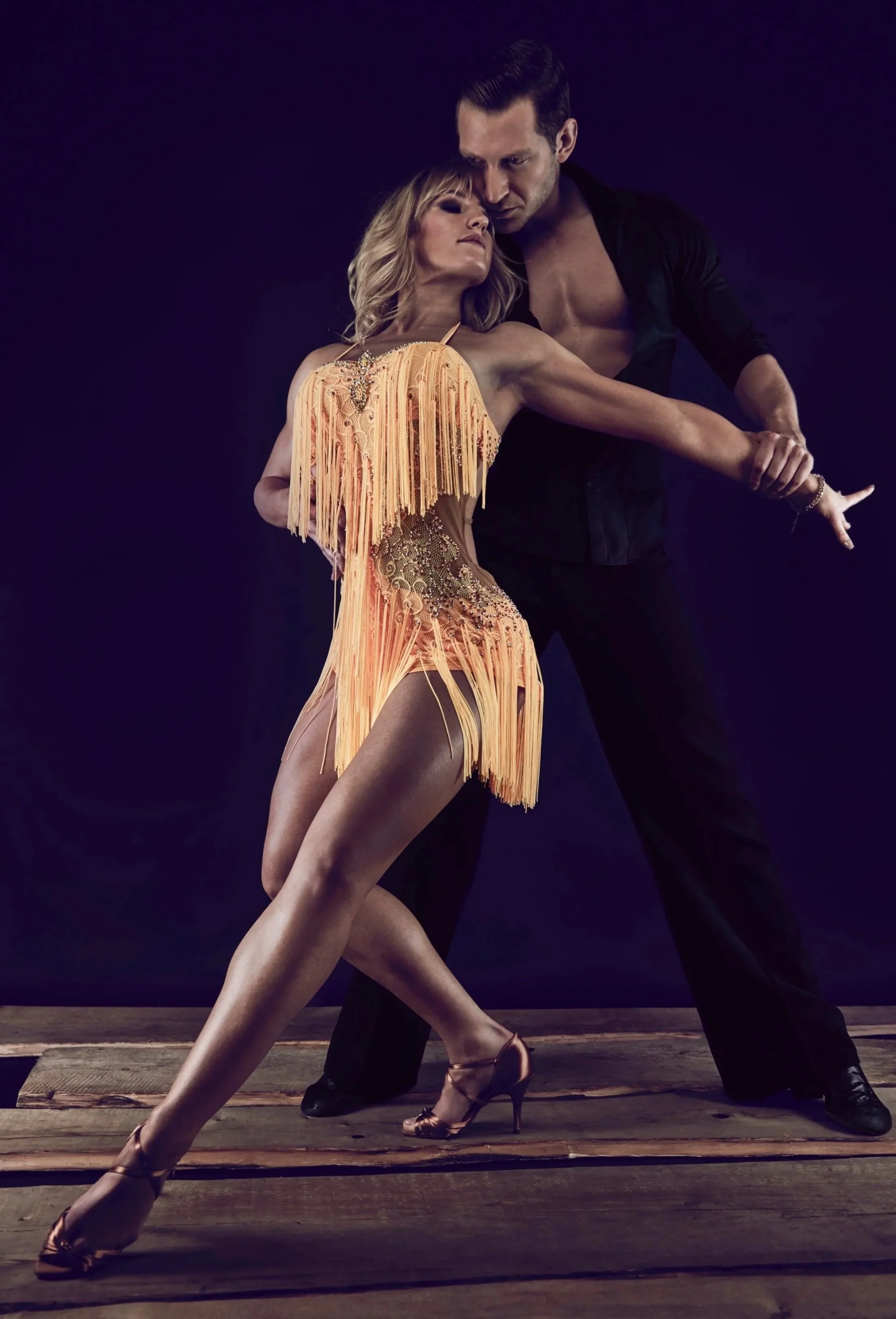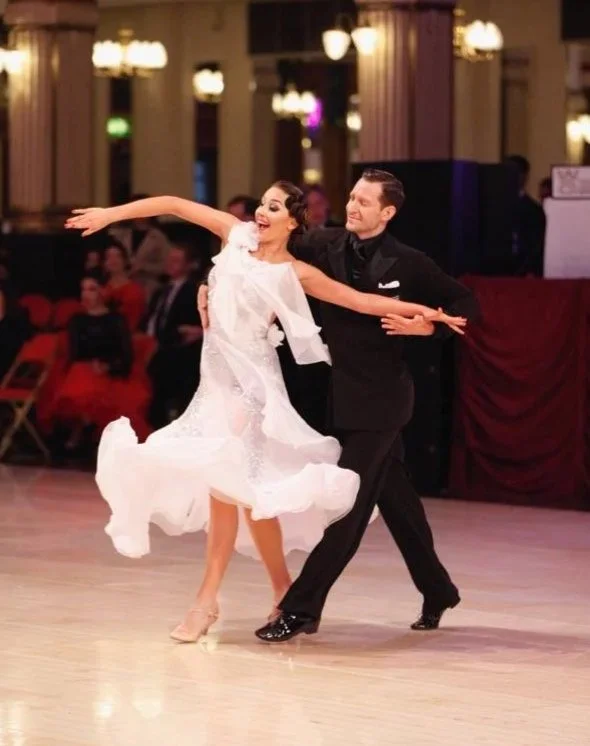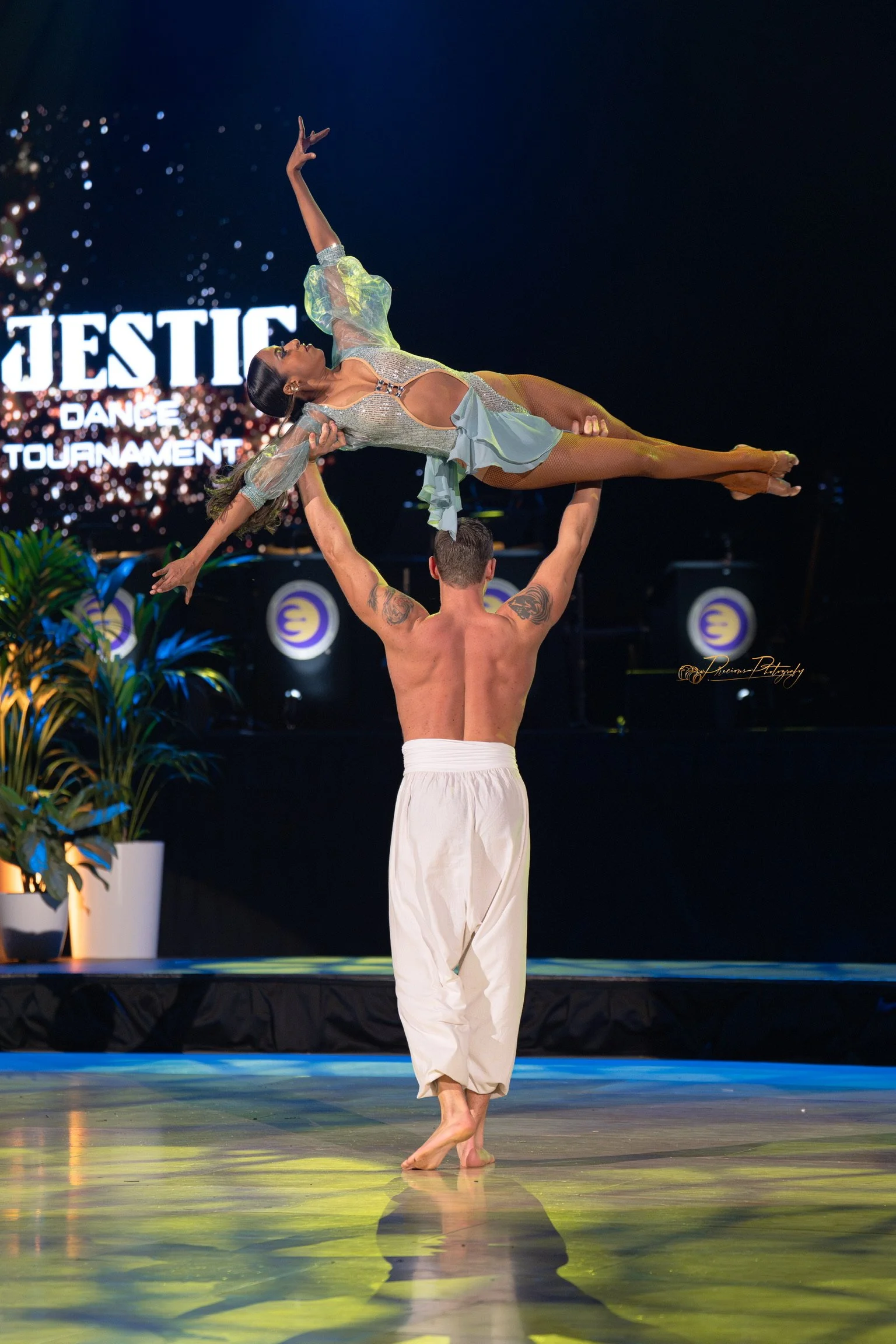Ballroom
Ballroom dancing is a partner dance style characterised by elegant, flowing movements performed to various types of music and consisting of 5 dances:
Slow Waltz
Tango
Viennese Waltz
Foxtrot
Quickstep
This dance form emphasises posture, timing, and connection between partners, making it both a social and competitive activity. Often seen in competitions, ballroom dancing also serves as a graceful hobby and a way to improve fitness, coordination and confidence.
Latin
Latin American dancing refers to a category of competitive Ballroom dancing that includes 5 main dances:
Cha Cha
Samba
Rumba
Paso Doble
Jive
These dances originate from Latin America and Spain, each with its own unique rhythm, tempo, and character.
Latin dances are distinguished by their vibrant, energetic movements and expressive bodywork. They emphasise hip action, sharp footwork, and intricate patterns, making them both a visual and physical challenge. This style of dancing promotes rhythm, flexibility, and musical interpretation, often performed in pairs with a focus on connection and coordination.
Smooth
American Smooth is a style that combines the elegance of traditional ballroom with the freedom of open movements. Smooth allows dancers to separate from the closed hold, incorporating open breaks and side-by-side choreography. This style includes 4 dances:
Waltz
Tango
Foxtrot
Viennese waltz
It emphasises smooth, flowing movements with dramatic expressions and artistic flair, making it popular both in competitions and show performances. American Smooth offers dancers the opportunity to develop both technical precision and creative styling, making it an excellent choice for those seeking a new hobby or lifestyle that blends discipline with personal expression.
Exhibition dance, or cabaret dance, is a theatrical style within Ballroom and Latin dancing focusing on performance, creativity, and storytelling.
Unlike traditional competitions that stress technique and rules, exhibition dance blends jazz, contemporary, and acrobatics to create striking routines with elaborate choreography, costumes and unusual lifts and tricks.
Popular in performances and galas, it allows dancers to express personality and creativity freely.
Ideal for private lessons, it offers a fun, fitness-rich hobby and suits pro/am couples seeking innovative routines, enhancing confidence, stage presence, and artistry in London’s dance scene.




